WD Red Pro 6 TB Review - High Performance NAS HDD Gets a Capacity Bump
by Ganesh T S on September 7, 2015 8:00 AM EST- Posted in
- NAS
- Storage
- HDDs
- Western Digital
Single Client Access - DAS Benchmarks
The WD Red Pro was connected to a 6 Gbps SATA port off the PCH in our DAS testbed. After formatting in NTFS, it was subject to our DAS test suite. While processing our DAS suite, we also recorded the instantaneous transfer rates and temperature of the drive. Compared to other NAS drives at the same capacity point, write transfers show higher instantaneous speeds due to a combination of the firmware and the 128 MB cache inside the disk. However, sustained write rates are comparable to other 6TB drives. The temperature of the unit at the end of the transfers, despite being blow 45C, is higher than any of the other drives at the same capacity point.
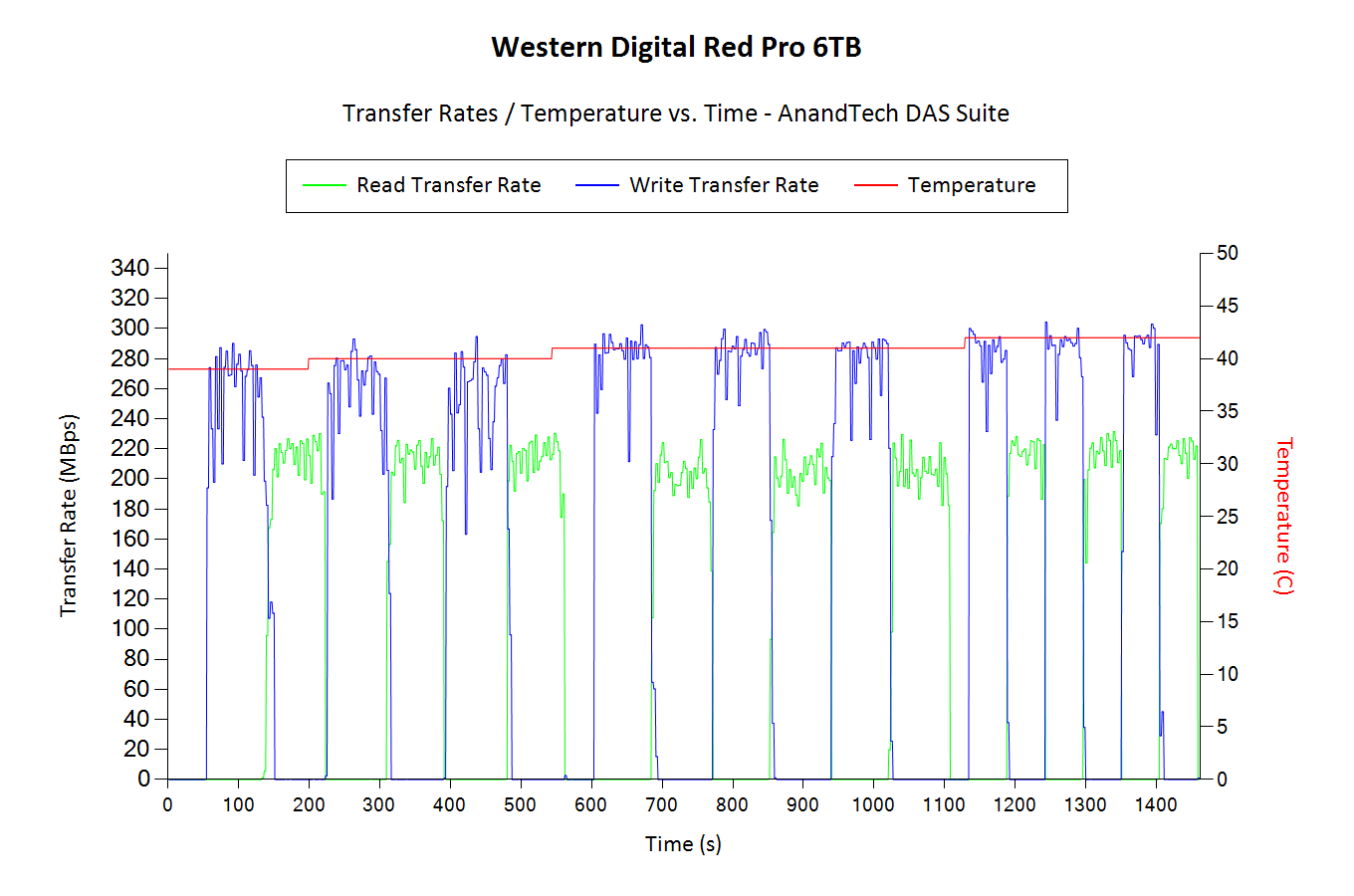
The graphs below present the average transfer rates for the various workloads and how they compare against other HDDs of the same capacity that have been evaluated before.

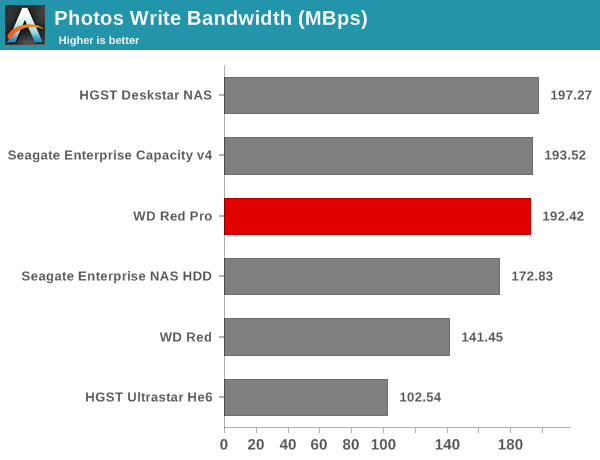
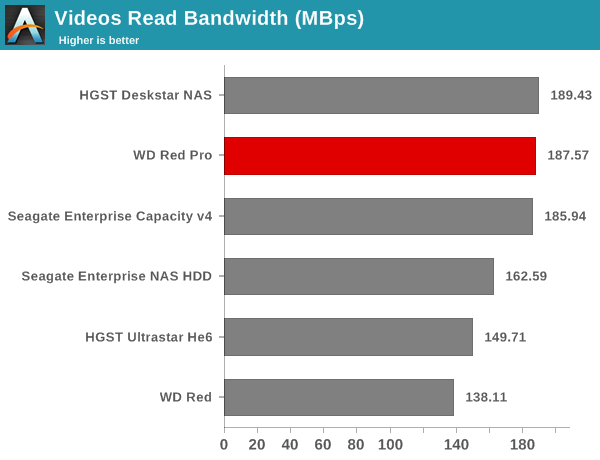
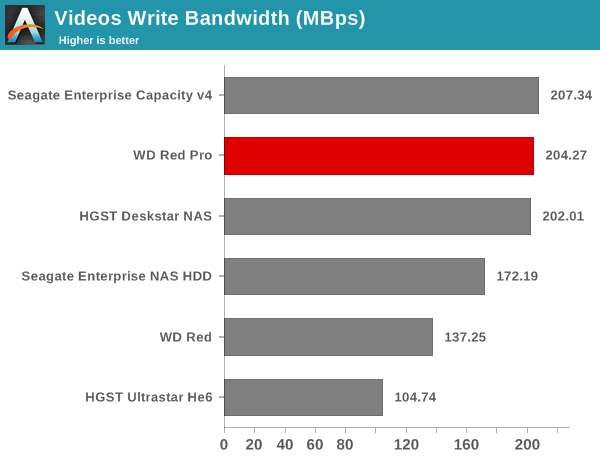
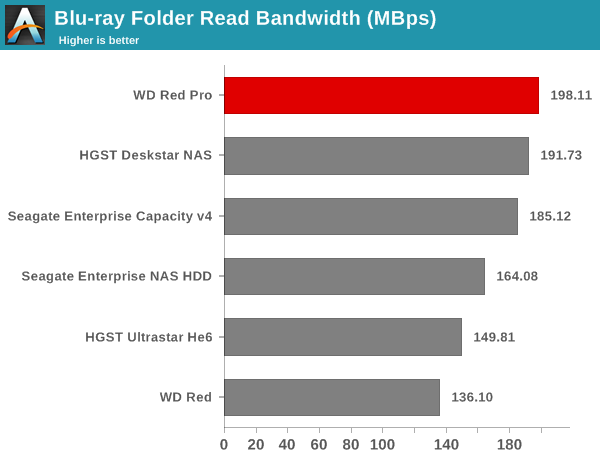
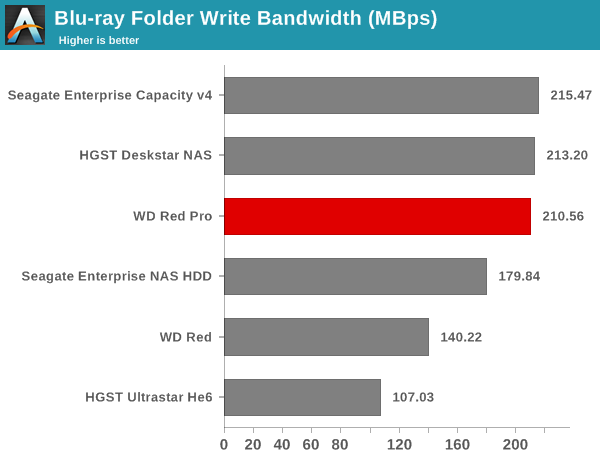
PCMark 8 Storage Traces
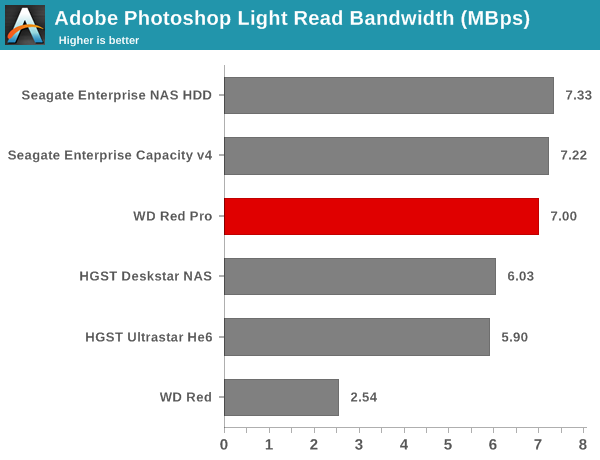
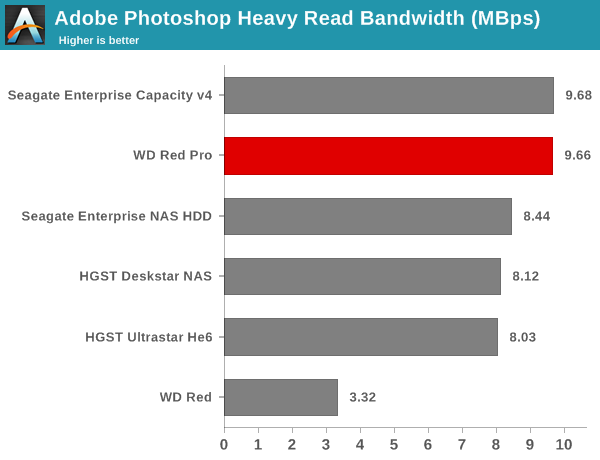
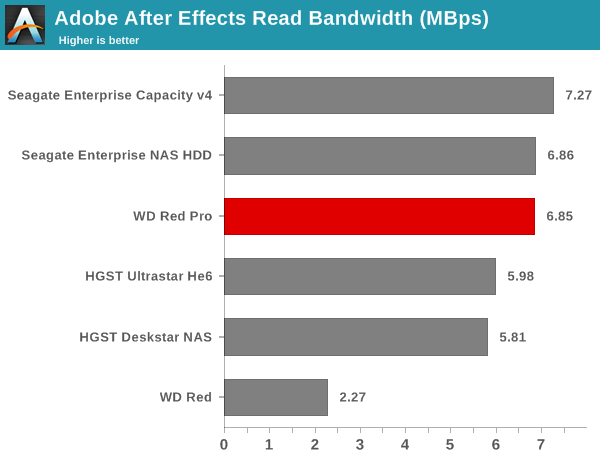
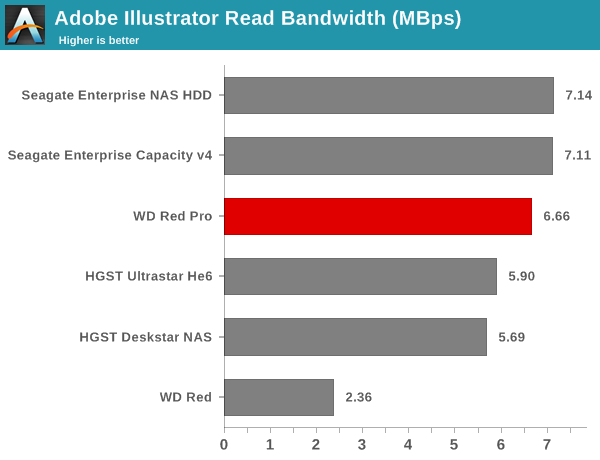
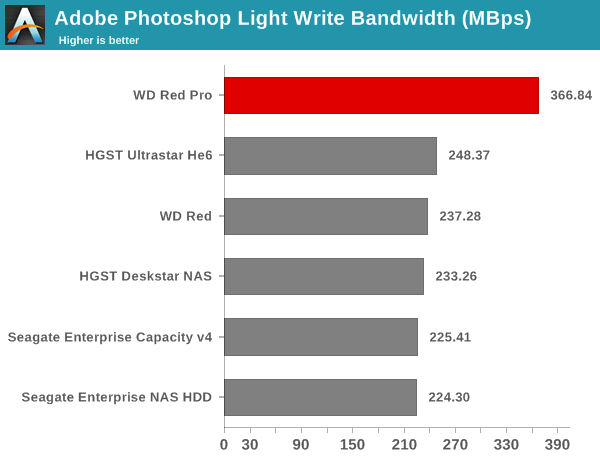
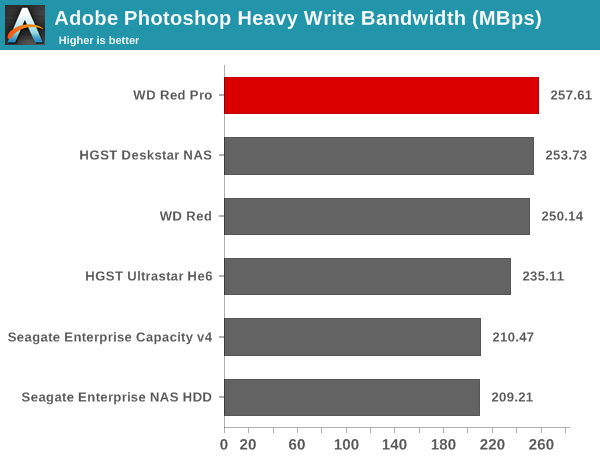

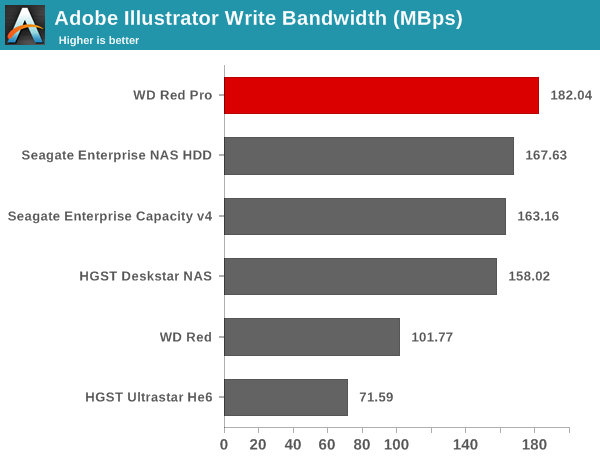
In the real-life workloads, the caching behavior enables the WD Red Pro to score better than the competitors in almost all the write tests. Read scenarios show it coming in the middle of the pack.










62 Comments
View All Comments
jragonsoul - Monday, September 7, 2015 - link
I have used a few Red as storage drives before. Liking the 6TB bump.Samus - Monday, September 7, 2015 - link
It's all I use for server storage drives. Haven't had one fail. All the models I've ever deployed are 1TB and 2TB drives. It's amazing how these modern hard disks are somewhat competitive with low-end SSD's (aside from access time)leexgx - Wednesday, October 21, 2015 - link
funny as i did not realize i had a backblaze HDD it is i accuity have the ST31500341AS drive in my system right now (1300 days power on time 7500 stop start count due to HDD power save spin down)and its failing slowly bad sectors are racking up and "reported uncorrectable errors" are now starting to happen (not gone up from when i started copying the data to a WD RED 4TB same 1607) don't think i lost any data itself as "read error rate" and "hardware ECC recovered" are still the same (not that the stuff on it is that important to lose any way) just 70 extra relocations in last day meant it was time to copy data to another drive
imaheadcase - Monday, September 7, 2015 - link
Streaming Not Supported Not SupportedWhat does that even mean?
ganeshts - Monday, September 7, 2015 - link
We covered the meanings of those table entries in a previous review: http://www.anandtech.com/show/7258/battle-of-the-4...A55A551N 11B2P - Thursday, September 10, 2015 - link
so you're saying that the WD Red PRO's wouldn't be good for a central media server with up to 6 clients?ddriver - Monday, September 7, 2015 - link
Judging by consumer reviews, HGST Deskstar seems to have the upper hand when it comes to reliability.Souka - Monday, September 7, 2015 - link
I've got a pair of WD 1TB Re drives in my NAS... full, so been wanting to put a pair of 4TB or 6TB drives in.... the WD Reds would be great, except I'm also seeing a lot of issues.Granted, not bad as the Seagate drives!
Source: https://www.backblaze.com/blog/best-hard-drive/
Samus - Monday, September 7, 2015 - link
I really don't recommend you follow backblaze statistics. They are collected under one use-case: cold storage. It's also important to note that all of their drives are consumer drives that lack firmware to change the harmonic vibration in cases with that many (72!!) drives. Most consumer drives are rated for installation in cases for 2-8 drives, with enterprise drives rated for up to 16 drives per chassis. Real data centers don't use pods like backblaze (who make their own) because no matter how you dampen the vibrations, these drives are not engineered to work in a large chassis together.All their data shows is Seagate drives suck as vibration resistance, with WD being slightly better and Hitachi cleaning the show. You know why? WD Red models and ALL Hitachi drives have the platter shaft locked at the TOP of the drive case; Seagate drives just have the shaft locked at the motor (bottom axis) which is for the most part adequate as long as vibration isn't an issue. This makes the drives cheaper, quieter, cooler and more efficient, and entirely adequate for consumer applications.
Souka - Tuesday, September 8, 2015 - link
Cool info, thanks!I'm not too worried though since my NAS is running Raid-1 Drive fails, RMA it. In 3-5years I'll likely either upgrade/replace the drives and/or get a new NAS+drives